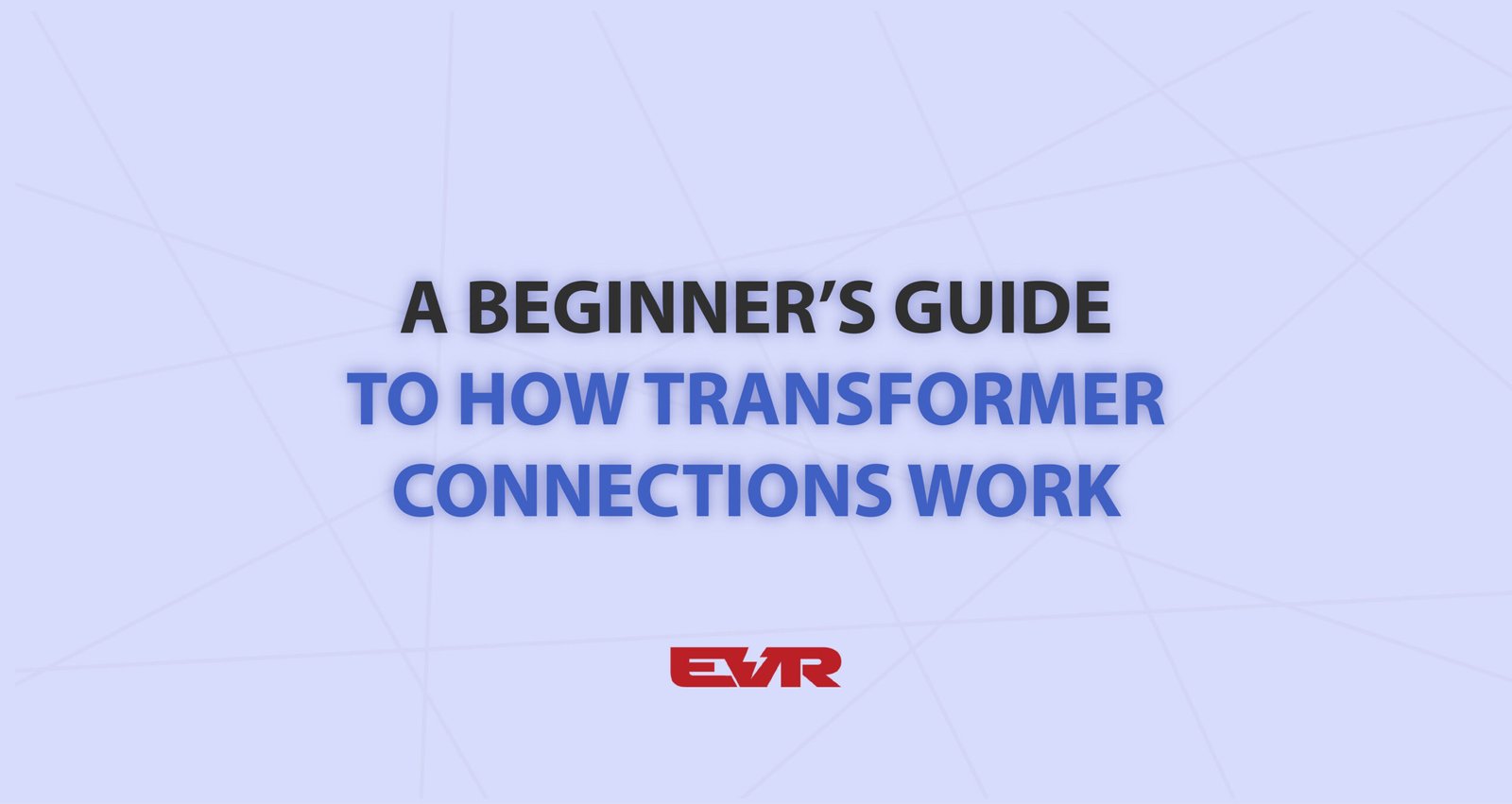Transformer connections help control how electricity flows from one place to another whether it’s lighting up homes, running machines, or charging electric vehicles. These connections decide how the wires inside a transformer are joined and how the voltage is changed.
In this easy guide, you’ll learn about the most common types of transformer connections, how they work, and where they’re used. We’ve kept it easy to follow, with straightforward explanations to help you learn the basics comfortably.
What You Should Know About Transformers?
A transformer is an essential electrical device. It is designed to change the voltage level of electric power, either increasing or decreasing the voltage as needed for the application.
Transformers are working silently in almost all our devices from generating electricity at power plants to running factories , homes and electric vehicle chargers. They are a way of transporting electricity efficiently over long distances and they are also the devices that regulate the voltage for any application, ranging from large industrial systems to very small electronics.
The most common type of transformer in large applications is the Power Transformer, which is built to handle large voltages typically used for transmission and distribution.
What’s the Significance of Transformer Connections?
Transformer connections essentially the manner in which the internal windings are connected are an important factor in how the system operates The connection type affects:
- Voltage Levels – It adjusts the voltage higher or lower based on the system’s need.
- Load Balance – It helps the system balance the load on the phases.
- System Stability – A sound connection maintains a steady flow of electrical power.
- Neutral Availability – Some connections have a neutral wire that is helpful for safety and handling unbalanced loads.
Different transformer types Isolation Transformers, for example, are used for separation and protection of sensitive equipment and will also use different connection methods based on the types of application.
Types of Transformer Connections
Understanding the different ways transformer windings can be connected helps you choose the right setup for your power needs. Here are the most common transformer connections explained in simple terms:
1. Star Connection (Y or Wye Connection)
A star connection involves connecting one end of each winding to a central point called the neutral, and connecting the other ends to the three phases.
Where it is used:
- Power distribution to homes, offices and commercial buildings.
- Where a neutral and line are needed.
- When long-distance power is transmitted.
Key advantages:
- It gives a neutral point that allows for safety and flexibility.
- Less insulation required, so it is economical.
- It assists in balancing loads on the phases.
2. Delta Connection
In a delta connection, the windings of the motors are connected end to end, creating a closed loop that resembles a triangle. It does not use a neutral wire.
Where it’s used:
- Industrial power system and industrial machinery
- Heavy duty machinery requiring large amounts of power
- Short distance power transmission
Key advantages:
- Works well under heavy loads
- Will continue to operate if one of the winding fails
- Handles more power and current with greater ease
Delta-connected transformers are common with Harmonic Mitigating Transformers, which is suited for industrial applications where there are a lot of non-linear loads.
3. Star-Delta and Delta-star Connections
Combined (hybrid) connections, such as star-delta and delta-star, are connections in which one side is connected in the star and the other side is connected in delta.
Common uses:
- Star-Delta connections are often used in motor starters to limit starting current.
- Delta-Star connections are commonly used in distribution transformers to provide balanced power to customers.
Key advantages:
- Can accommodate different voltage levels effectively
- Lowers mechanical shock or stress when starting motor load
- Ideal for systems with balanced three-phase loads
You will see these combinations in many different transformers, such as Convertor/Inverter Transformers that connect AC and DC power systems together, especially when using renewable energy sources or charging electric vehicles.
Understanding Transformer Connections Made Simple
Still confused between Star, Delta and Star-Delta? Let’s compare it to carpooling:
- Star Connection: This is like everyone meeting up together at a common pick-up point (the neutral), before all of them going in different directions as a group. It is organized and safe – ideal for long distance travel.
- Delta Connection: This is like each individual already within the loop, transmitting energy along without a central drop off point. It is strong and steady – great for really large loads.
- Star-Delta Connection: This is like switching between the two depending on the situation – using Star to start the process smoothly before switching to Delta to cruise along. It is comfortable, efficient, and even resonates.
How EVR Power Makes It Simple
At EVR Power, we don’t just manufacture transformers, we build reliable power solutions for India’s evolving energy landscape. From utility-scale Power Transformers to precision Isolation Transformers for sensitive systems, our products combine advanced engineering, tested performance, and customer-first design.
Whether you’re a student, technician, or just power-curious, understanding transformer connections is a solid foundation. When it’s time to upgrade or expand your system, EVR Power is ready with the right transformer to match your needs.
The Hidden Logic Behind Reliable Electricity
Transformer connections may look complex at first glance, but essentially, all connections are about using electricity in a more efficient and safer manner. The balance and safety of the Star connection, the strength of Delta connections, and the hybrid types of each connection, each type of connection has advantages in ensuring we have the power we need.
Once you have an understanding of the defined role of various transformer connections, you have a better grasp on the fundamental components that make up the foundations of power distribution. And if you are ever unsure of the connections, the team at EVR Power is more than happy to help with the heavy lifting.


0 Comments